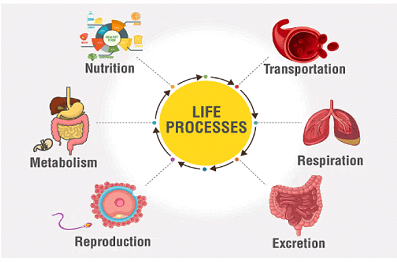Covalent Bond
Essential Chemistry Concepts for Examination Success
Introduction to Covalent Bonding
Covalent bonding is one of the fundamental types of chemical bonding that occurs between atoms. Unlike ionic bonds, which involve the transfer of electrons, covalent bonds involve the sharing of electron pairs between atoms to achieve stability.
This sharing of electrons allows atoms to complete their valence shells and attain a stable electronic configuration similar to that of noble gases (octet rule). Covalent bonds are particularly important in organic chemistry and form the backbone of carbon-based compounds.
Formation of Covalent Bonds
Covalent bonds typically form between non-metals with similar electronegativities. When two atoms approach each other, their valence electron orbitals begin to overlap. This overlap creates a region of high electron density between the atoms, forming a covalent bond.
The shared electrons are attracted to the nuclei of both atoms, creating a strong electrostatic force that holds the atoms together. The distance at which the attractive and repulsive forces balance is called the bond length.
Example: Formation of Hydrogen Molecule (H₂)
Each hydrogen atom has one electron in its valence shell and requires one more to achieve the stable electronic configuration of helium (2 electrons). When two hydrogen atoms come close, their 1s orbitals overlap, and they share their electrons, forming a single covalent bond.
H−H: Each hydrogen atom now effectively has 2 electrons (complete shell)
Types of Covalent Bonds
Based on the number of electron pairs shared between atoms, covalent bonds can be classified into:
1. Single Covalent Bond
When one pair of electrons is shared between two atoms, a single covalent bond forms. It is represented by a single line between the atomic symbols (A−B).
Example: Hydrogen chloride (HCl)
H−Cl: One electron pair is shared between hydrogen and chlorine atoms
2. Double Covalent Bond
When two pairs of electrons are shared between two atoms, a double covalent bond forms. It is represented by two parallel lines between atomic symbols (A=B).
Example: Oxygen molecule (O₂)
O=O: Two electron pairs are shared between oxygen atoms
3. Triple Covalent Bond
When three pairs of electrons are shared between two atoms, a triple covalent bond forms. It is represented by three parallel lines between atomic symbols (A≡B).
Example: Nitrogen molecule (N₂)
N≡N: Three electron pairs are shared between nitrogen atoms
Characteristics of Covalent Bonds
| Characteristic | Description | Examination Significance |
|---|---|---|
| Bond Strength | Generally strong bonds. Triple bonds > Double bonds > Single bonds | Determines physical properties and reactivity of compounds |
| Directionality | Covalent bonds have specific orientations in space | Explains molecular geometry and stereochemistry |
| Bond Length | Distance between nuclei of bonded atoms. Triple bonds are shorter than double bonds, which are shorter than single bonds | Affects molecular stability and reactivity |
| Bond Energy | Energy required to break a covalent bond | Used to calculate enthalpy changes in reactions |
| Polarity | Unequal sharing of electrons between atoms with different electronegativities | Determines solubility, intermolecular forces, and reactivity |
Polar and Non-polar Covalent Bonds
Non-polar Covalent Bonds
When two identical atoms form a covalent bond, or when atoms with very similar electronegativities bond, the electron pair is shared equally between them. This results in a non-polar covalent bond where the electron density is symmetrically distributed.
Examples of Non-polar Covalent Bonds:
- H−H in hydrogen molecule (H₂)
- Cl−Cl in chlorine molecule (Cl₂)
- C−C bonds in alkanes
Polar Covalent Bonds
When atoms with different electronegativities form a covalent bond, the electron pair is shared unequally. The more electronegative atom attracts the electron pair more strongly, acquiring a partial negative charge (δ−), while the less electronegative atom acquires a partial positive charge (δ+).
Examples of Polar Covalent Bonds:
- H−Cl in hydrogen chloride (HCl)
- C−O bonds in alcohols
- N−H bonds in ammonia (NH₃)
In HCl, chlorine (more electronegative) has a partial negative charge (δ−), while hydrogen has a partial positive charge (δ+).
Coordinate Covalent Bond (Dative Bond)
A special type of covalent bond where both electrons in the shared pair come from the same atom is called a coordinate covalent bond or dative bond. The atom that donates the electron pair is called the donor, and the atom that accepts is called the acceptor.
Example: Ammonium Ion (NH₄⁺)
In the formation of NH₄⁺, the nitrogen atom in ammonia (NH₃) donates its lone pair to the hydrogen ion (H⁺), forming a coordinate covalent bond.
Similarly, in the formation of a complex between boron trifluoride (BF₃) and ammonia (NH₃), the nitrogen donates its lone pair to the boron atom to form a coordinate bond.
Hybridization in Covalent Bonding
Hybridization is a concept that explains the geometry of molecules by mixing atomic orbitals to form new hybrid orbitals. This is particularly important in understanding the bonding in carbon compounds.
Types of Hybridization
| Hybridization | Geometry | Bond Angle | Example |
|---|---|---|---|
| sp³ | Tetrahedral | 109.5° | CH₄ (methane) |
| sp² | Trigonal planar | 120° | C₂H₄ (ethene) |
| sp | Linear | 180° | C₂H₂ (ethyne) |
Properties of Covalent Compounds
- Physical State: Generally exist as gases, liquids, or soft solids at room temperature (with exceptions like diamond and graphite)
- Melting and Boiling Points: Generally have low melting and boiling points due to weak intermolecular forces
- Electrical Conductivity: Poor conductors of electricity as they do not have free electrons or ions
- Solubility: Generally soluble in non-polar solvents and insoluble in polar solvents (like water) unless they can form hydrogen bonds
- Hardness: Generally soft (with notable exceptions like diamond)
- Reactivity: Reactions typically involve breaking and forming of bonds rather than electron transfer
Comparison: Covalent vs. Ionic Bonding
| Property | Covalent Bond | Ionic Bond |
|---|---|---|
| Formation | Sharing of electron pairs | Transfer of electrons |
| Atoms Involved | Usually between non-metals | Between metals and non-metals |
| Electronegativity Difference | Small (0-1.7) | Large (>1.7) |
| Melting/Boiling Points | Generally low | Generally high |
| Electrical Conductivity | Poor conductors | Good conductors in molten or aqueous state |
| Solubility in Water | Generally insoluble (with exceptions) | Generally soluble |
| Bond Strength | Strong directional bonds | Strong non-directional forces |
Practice Questions for Examination
Question 1:
Explain why carbon dioxide (CO₂) is a linear molecule with 180° bond angles, while water (H₂O) is bent with a bond angle of approximately 104.5°.
Hint: Consider the hybridization and lone pairs in each molecule.
Question 2:
Draw and explain the Lewis structure for methane (CH₄), showing all bonds and electron pairs.
Hint: Consider the valence electrons of carbon and hydrogen.
Question 3:
Identify the type of bond (non-polar covalent, polar covalent, or ionic) in the following:
- NaCl
- O₂
- HF
- CH₄
- MgO
Hint: Consider the electronegativity differences between atoms.
Question 4:
Explain the concept of resonance with reference to the benzene molecule (C₆H₆).
Hint: Consider the delocalization of electrons in the ring structure.
Question 5:
Why do covalent compounds generally have lower melting and boiling points compared to ionic compounds?
Hint: Consider the types of intermolecular forces involved.
Summary: Key Points for Examination
- Covalent bonds form through the sharing of electron pairs between atoms
- They can be classified as single, double, or triple bonds based on the number of shared electron pairs
- Covalent bonds can be polar or non-polar depending on the electronegativity difference between atoms
- Coordinate covalent bonds form when both shared electrons come from the same atom
- Hybridization explains the geometry of molecules (sp³ = tetrahedral, sp² = trigonal planar, sp = linear)
- Covalent compounds generally have low melting points, low boiling points, and poor electrical conductivity
- Covalent bonding is primarily found in compounds formed between non-metals
- Bond polarity affects molecular polarity, which in turn affects properties like solubility



